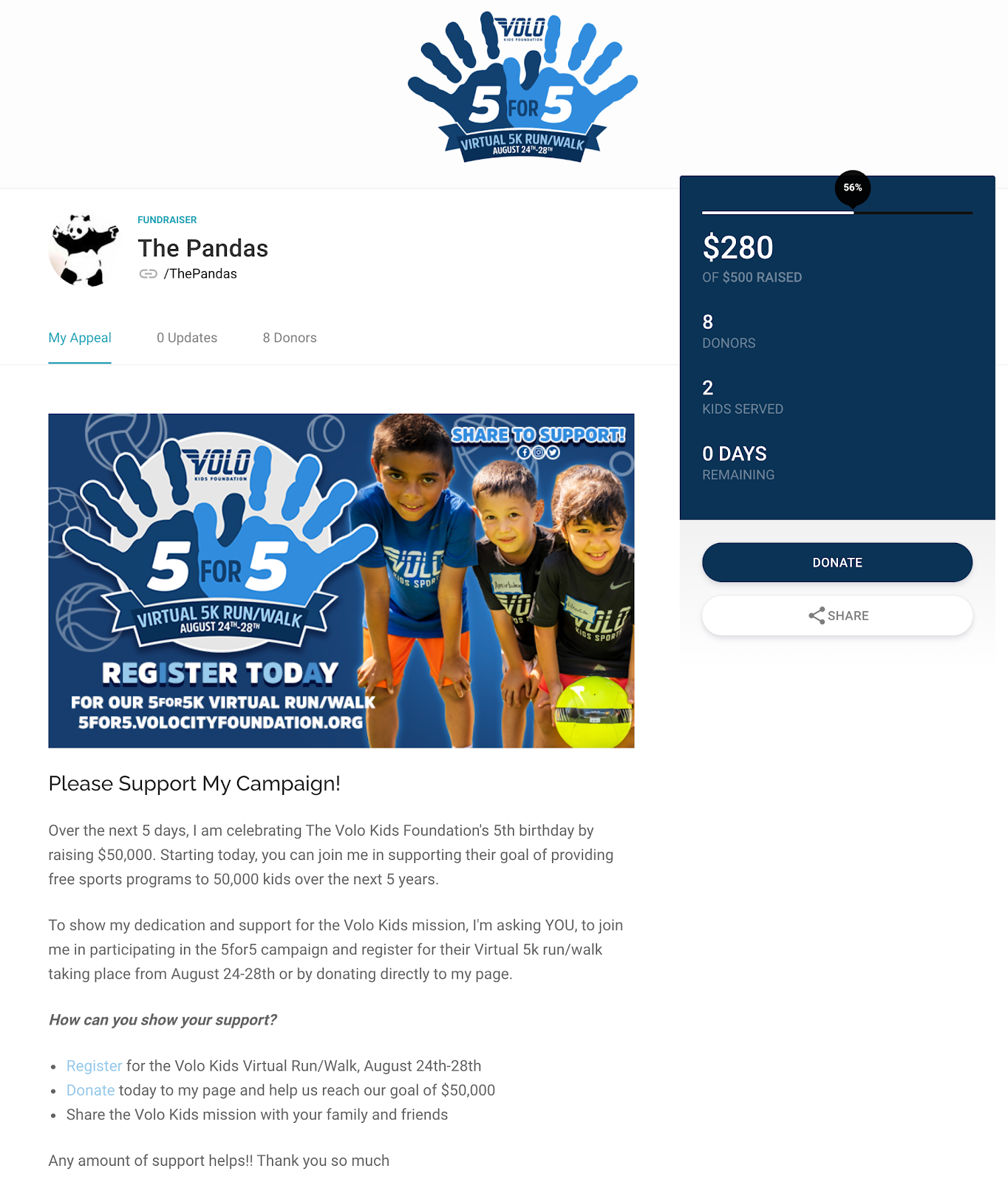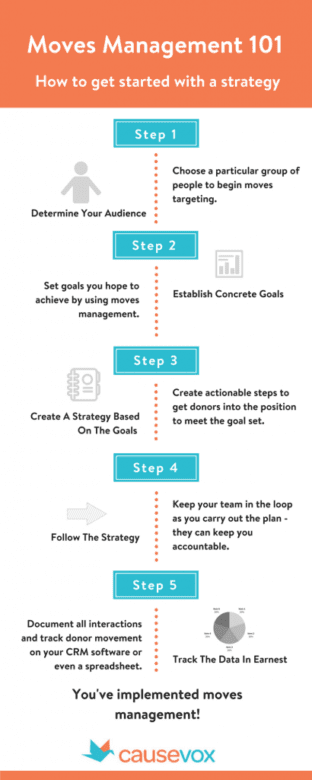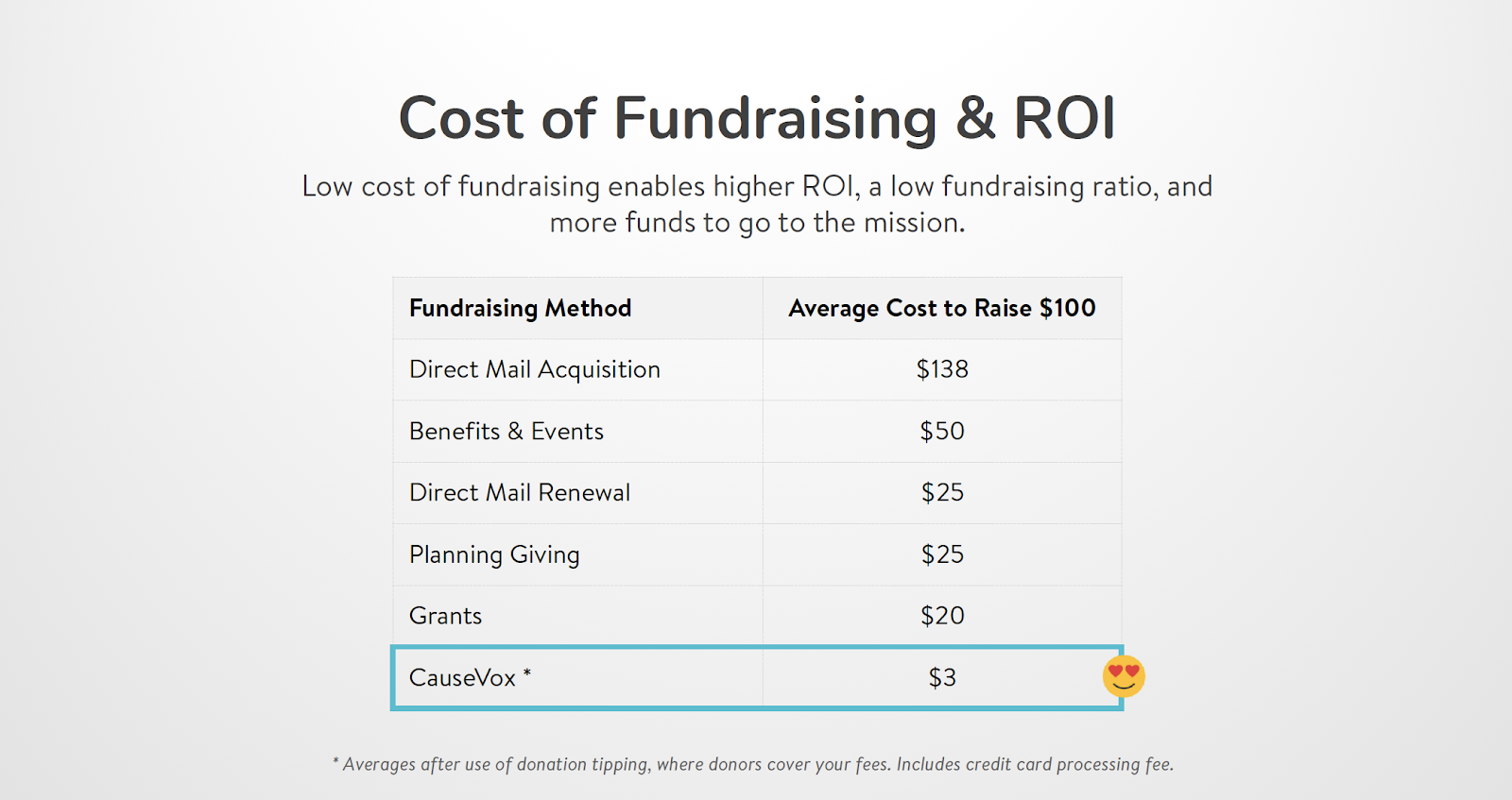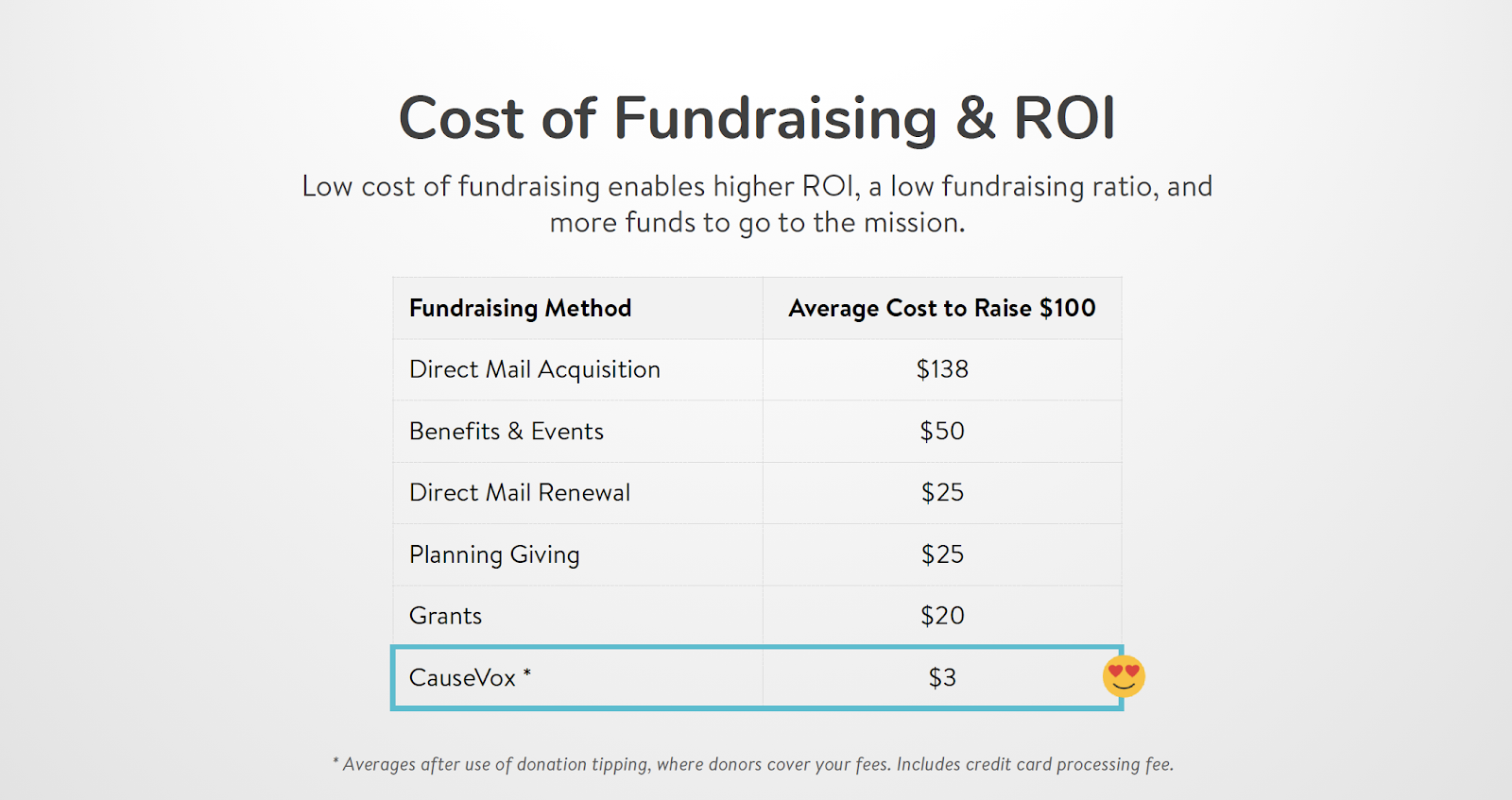Nonprofit life is all about doing more with less. If we’re known for anything it’s for taking a shoestring budget and producing amazing results. We know how to fundraise on a budget with the best of them.
The strongest fundraising has a clear purpose. For every action you take, know what you’re trying to accomplish: bring in new donors, upgrade current donors, foster community, or something else entirely.
To help you find the right tactic to help you fundraise on a budget, we’ve put together some top tips for digital fundraising with the highest return on investment.
Budget-Friendly Fundraising Tip #1: Bring In New Donors With Peer-to-Peer Fundraising
One of the most expensive parts of fundraising is bringing in new donors. That means that if you’re fundraising on a budget, it is one of the most challenging elements. Peer-to-peer fundraising is a powerful strategy if you’re looking to bring in new donors.
Peer-to-peer campaigns can keep pace and even outperform traditional ones–we see campaigns that use peer-to-peer on CauseVox raise up to 200% more than standard campaigns.
Even better, peer-to-peer campaigns don’t require the same kind of investment as some traditional fundraising activities, making the return even higher. Your current supporters can easily transition into fundraisers who take on the work your staff would normally do. Less hassle for you, more love from your community. If you’re not sure where to start, your board is often a solid list of potential fundraisers.
You give $50. You share the campaign with your friend, and she gives $100. She recruits someone who gives $30, and another who gives $20.
Now, the organization has $200, and four supporters. That’s more than each donor would give alone, and a lot more impactful than each gift by itself. This is the power of peer-to-peer fundraising, and the reason it’s such an effective use of your time and money.
Floyd Jones is the Director of Fundraising and Community Outreach at Volo City, and he witnessed the power of peer-to-peer fundraising firsthand.
When Floyd was hired on and found CauseVox, he knew it was going to be a gamechanger. “With such a small fundraising team — we needed all the support we could get. Our fundraising is rather diverse…we touch events, we have corporate sponsorships, we have service work, but our peer-to-peer [fundraising] has been the key that’s been exponential in helping us grow,” explained Floyd. He found that peer-to-peer fundraisers allowed his small staff to work with a dedicated group of fundraisers, which expanded their reach drastically. For each fundraiser they worked with, they got back multiple donors and significant dollars.

Check out some of our ideas for peer-to-peer campaigns if you want to invest less staff time to bring in more money and reach tons of new donors.
Budget-Friendly Fundraising Tip #2. Matching Grants: Inspiring Immediate Action
When you’re fundraising on a budget, it’s crucial that you make every fundraising dollar count. One of the most effective ways to do that is through matching gift programs— a simple way to leverage corporate philanthropy and get two donations in one!
A matching gift is an incredibly powerful way to excite potential donors. This strategy is great to pull in new donors and to reignite the interest of old or lapsed donors. According to Tech Soup, mentioning matching gifts in fundraising appeals results in a 71% increase in response rate and a 51% increase in average donation amount, while Double the Donation’s matching gift statistics show 84% of potential donors are more willing to give if a match is being offered!
You can reach out to your board, a strong historical donor, or a business that you have connected with to build a match. Once you’ve created it, make sure that you feature it in all your communications and on your donation page to get your donors excited.
Matching gifts are also a great way to boost donations mid-campaign. If you notice that donations are starting to taper off mid-day, try to introduce a matching gift to keep the excitement and momentum going. You can promote a match through all your frequent channels of communication whether it be social media, email, or a newsletter.
No matter when you announce your match, it’s sure to get your donors moving right now. It gives them a sense that there’s a limited time for their donation to make the biggest difference. A little bit of upfront work on your end to find a matching grant can have huge returns.
Budget-Friendly Fundraising Tip #3. Moves Management: Upgrading Current Donors
If you’re fundraising on a budget and want to get the most bang for your buck, the best place to look is people who have already donated to your organization. It costs five times as much to attract a new customer, than to keep an existing one. Taking the time to create a solid donor retention plan pays off big. This is where move management comes into play.
Moves management is a process by which a nonprofit or charity develops a plan to grow donor relationships by moving them along a predetermined path from the initial cultivation to the “ask” and beyond. It’s what takes your donor retention strategy and amps it up to the next level. It’s the difference between a Charmander and a Charizard.
This is Donor Retention:
This is Moves Management:
Let’s start with some quick donor retention strategies before we jump into moves management. The first step of moves management is making sure your donors stick around for you to move them into higher levels of giving.
- Thank your donors! According to GuideStar, thanking your donors within 48 hours will make them 400% more likely to give again.
- Ask for a second donation. According to Bloomerang, donors who give a second gift within the first three months of their first give nearly twice as much over a five-year period.
- Ask for a recurring donation. According to the Fundraising Effectiveness Project, recurring donors have a 90% retention rate in comparison to 46% for one-time donors.
- Offer volunteer activities. The more ways your donor feels involved, the more they’ll want to support you.
- Stay in contact! Make sure your donors receive regular emails (especially emails that don’t include asks), and that they’re involved through your social media channels as well.
With these basic tips, you’re going to have donors that stick around. But you don’t simply want your donors to make the same gift year after year. You want them to increase their gifts. That’s where moves management comes in.

Start by deciding who you’ll focus on: current donors, recurring donors, or perhaps prospective major donors. Don’t just pull a list from your CRM: take the time to look at specific names and the data you have for that person. How often do they give? How much? When did you last communicate with them? Get to know your potential donors.
From here, you can decide what your goal is. Some possibilities include:
- A particular gift amount for a major donor
- Percentage of donors converted to monthly giving
- Percentage of donors becoming personal fundraisers in a peer-to-peer campaign.
- Number of donors hosting a fundraising activity
Here’s where the management part comes in: create a plan so that you know how you’re going to get from the status quo to your goal.
A stellar moves management strategy includes a number of action-items performed on a regular basis, such as monthly or quarterly, to encourage consistent participation in the donor engagement cycle.
Here’s an example:
- January: Phone call
- February: Event invite
- March: Handwritten thank you
- April: Phone call about participating as a personal fundraiser
You can use the same template for a wide group of supporters to make things more efficient. Follow your plan and take notes as you go so you can see what’s working and what’s not. That will help you improve as you start adding more people to your group and moving people towards your goals.
These strategies will help you improve your relationship with current donors while incentivizing them to give more.
Budget-Friendly Fundraising Tip #4: Using the Right Platform and Streamlining Your Donation Process
One of the fastest ways to throw money away is by using a confusing and complicated donation platform. If you’re fundraising on a budget, that is not what you want. You can have the best campaign in the world, but if donors reach the donation page and it’s confusing or overwhelming, they’ll close that window faster than you can say “bob’s your uncle”. And if you’re paying high processing fees just to get your donations? You’ve lost a significant chunk of your revenue (CauseVox has a 0% platform fee option, just as an example).

Avoid the clunk and keep it simple.
The fundraising platform you use needs to echo the focused simplicity of your message. A confusing array of donate buttons, opt-in boxes and distracting visual elements is just as off-putting as ambiguous, abstract language.
Here’s an example of a powerfully simple donation form, built through CauseVox:
In addition to an easy to use platform that makes your donors feel competent, there are some other things to consider:
- What kind of fees does the platform charge? Can you ask donors to cover the fees?
- Does it integrate with other software to minimize your work?
- Are there hidden costs?
- Can you keep your branding consistent?
- Does it mesh with your communication needs? “We take pride in our authentic engagement and CauseVox allowed us to turn these real-life connections into tangible dollars. CauseVox is not just another giving site – it is a powerful and interactive storytelling tool.” —Lauren at The Motherhood Collective
- Can you set up recurring gifts?
- Does it allow peer-to-peer fundraising?
Here’s a little secret: CauseVox knocks it out of the park in all these areas. You’ll raise more with less work and less cost.
Budget-Friendly Fundraising Tip #5: Social Media: Building Community
Marketing can be one of the most challenging elements of fundraising on a budget. You want to spend less and get more in return. Social media is technically free advertising (which is exactly what you want when you have a tight budget), but that doesn’t mean you can just build any old page and see donations roll in. A solid social media strategy can turn your social pages into huge assets that cost you nothing except a bit of time each week.
Here’s the first step of your social media flowchart: social media brings people to your website, where you have the chance to sit down with them and really share your story.
How do you do this? Content.
There are three ways to use content successfully:
- Create and share your own content in order to:
- Share your thoughts
- Motivate your audience to take action on something
- Educate your audience
- Curate content by keeping informed on content creators in your field and share what you find valuable for your audience.
- Provide your crowdfunding teams with content to share and/or share content they create.
Spending a bit of time upfront to create quality content will have big payoff. Content that works: Substantial posts with videos and eye-catching visuals that link to articles and pages with more information. Forbes cited research showing that posts with images get an 85% interaction rate on Facebook and 35% Retweet rate on Twitter.
If you’re overwhelmed by creating content, sites like Canva are a great place to easily build beautiful visuals to complement your storytelling.
Another great option for getting good content is sharing.
This strategy encapsulates the core of effective social media marketing: promote others in order to promote yourself..
This approach works much better than simply promoting your own material directly because it allows you to appeal to social proof: other people besides you believe in your cause and that’s what you are highlighting.
Takeaway: Share your crowdfunders stories and help them gain an audience. Have them share yours.
You can streamline your social media strategy by using a manager like Hootsuite to post across platforms.
Generating good content consistently is one of the most difficult elements of a strong social media campaign. To make sure you always have ideas and you are creating content that fits into your strategy, build content to support a specific initiative or around a specific theme.
For example, if you are planning a fundraiser to create a new program supporting girls’ education, you can develop a series of videos, infographics, blog posts, and whitepapers on the topic:
- Start with easily digestible material, like infographics and short videos that explain the situation girls face. These will likely be the first things your audience encounters.
- Then, develop some meatier content that tells the stories in more detail. These can be blog posts and longer videos. These will accept traffic from the infographics and short videos, and will likely be hosted directly on your blog.
- Lastly, create some blog posts and whitepapers that explain the technicals of the situation, as well as your donation pitch and a call-to-action inviting readers to donate in support of your cause.
This might seem like a lot of work, but if you focus on one area and set aside time each week to work on your social media strategy, you’ll end up with great ROI.
Budget-Friendly Fundraising Tip #6: Using Your Data To Increase ROI: Learning What To Do Next
The last and most important way to get big returns on your small fundraising budget is to take data. This helps you to learn what works for YOUR organization and build strong plans for the future. Make sure that you have a strong CRM that allows you to determine the ROI on different fundraising activities. This can help you determine where to focus efforts in the future.
Here is some general data to get you started:

Once you’ve got that data, you can create more effective budgets and plans for the future. You might think that the best way to approach these budgets is to minimize the money you’re putting into anything. That’s not always the case. Sometimes the best ROI comes when you invest a bit more but get a bit payout.
Don’t be afraid to spend money or time on long term projects like major gifts, bequests, or crowdfunding campaigns. These have big impacts and high ROI. You may also need to invest a bit to get tools that pay off in the long run.
Another quick tip: virtual events tend to have a much higher ROI than in-person events, even if they don’t bring in the same dollars. Why? Virtual events have much lower costs. For more details on the power of virtual events check out Summit Assistance Dogs, whose ROI increased from ~200% to over 1600% when they went virtual.
Data also allows you to segment your donor database. Donor segmentation involves grouping your donors based on certain characteristics. You may, for instance, want to identify your major donors so that you can inform them of your campaign in person. Knowing which donors require more of your attention will help you allot your time, resources, and funds wisely.
As part of your segmentation, you’ll also want to determine a preferred communication channel. Time is money! Sending communications to people who won’t respond is a waste of both. Keeping your fundraising campaign low-cost involves efficient, effective communication that will inspire steady giving. Knowing your donors’ preferred communication channels will help you reach them in a way that resonates.
From your data, you can improve every other area we’ve mentioned already. Knowledge is power.
Fundraise On a Tight Budget with CauseVox
If you’re looking for a platform that lets you implement these strategies with no cost to you, CauseVox is the place to start.
CauseVox has easy to use donation pages that you can brand and embed on your own site. Less hassle so you can focus on your mission. Plus, with stellar customer support, you’ll never have to talk to a robot when you have a question.
If you’re ready to start optimizing, let CauseVox make the process more simple with less clunk.






